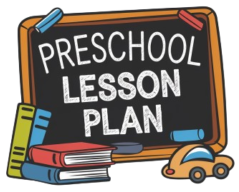Now it is time to develop the medium of finger painting in this preschool lesson plan as expressive while cultivating a friendly, noncritical atmosphere for one’s productions.
Finger painting is an amazingly engaging and sensory-rich activity that generally acts as a great tool to enhance self-expression in preschool children. This fascinating kind of art enables the children to dive into a kaleidoscopic world of colours, textures, and patterns, allowing them to explore their creativity.

Finger Painting has both a tactile and visual quality to it, often encouraging fun in playing with mix-and-blend techniques, which can help children hone fine motor skills in the execution of the action.
We will create an environment where children can safely share their thoughts and feelings to promote emotional expression alongside artistic exploration. We will incorporate different materials such as non-toxic paints, large sheets of paper, and smocks over their clothes for the children to have fun and safely enjoy the experience.
Additionally, we will be adding guided discussions about colour choices and techniques that allow the children to articulate the creative process. Finger painting in this lesson is holistic education since it is targeted at young learners’ developing not only skills but also confidence and good communication.
How to Create a Preschool Lesson Plan
Grade Level: Preschool
Duration: 1 Period (Approximately 40 minutes)
Topic: Finger Painting for Self-Expression
Content Standard:
To develop fine motor skills and encourage creativity and emotional expression through art activities.
Learning Objectives:
At the end of the lesson, students will be able to:
1. Express emotions and ideas playfully, using techniques of finger painting.
2. Enhance hand-eye coordination and fine motor movements.
3. Recognize and identify the names of primary colours used in their artwork.
Materials Required:
- Non-toxic finger paints (red, blue, yellow)
- Large sheets of paper
- Protective aprons for children
- Wet wipes or handwashing station
- Plastic table covers
- Examples of abstract finger-painted art (optional)
Lesson Procedure:
1. Introduction (5 minutes):
- Greet the students and bring them around a demonstration table.
- Briefly explain finger painting and why it is fun and important to express feelings and ideas.
- Show examples of finger-painted art and discuss the emotions or ideas these might represent.
- Emphasize that there is no “wrong” way to finger paint; it’s all about creativity and self-expression.
2. Demonstration (5 minutes):

- Put on an apron and demonstrate how to use finger paints.
- Show how to dip fingers into paint and make different patterns (dots, swirls, lines).
- Mix two colours on the paper to create a new colour, explaining the process aloud.
- Discuss how different colours can represent different feelings (e.g., blue for calm, red for excitement).
3. Hands-On Activity (20 minutes):
- Distribute the materials to each child’s workstation.
- Encourage students to:
- Get the feel of paint on their fingers.
- Make patterns or pictures showing their feelings or favourite things.
- Experiment with mixing colours.
- Walk around giving positive reinforcement, encouraging the students to talk about their work.
4. Clean Up and Reflection (5 minutes):
- Direct students to wash their hands and clean their workspace.
- Have the students sit in a circle and show their paintings to the others.
- Ask questions such as, “What is in your painting?” or “How did you feel when you were making this?
5. Closure (5 minutes):
- Summarize the activity, emphasizing how feelings and thoughts can be expressed through art.
- Ask students to do finger painting at home and share it with their families.
Assessment:
- Observe student engagement and participation in the activity.
- Record the ability to name colours and describe their artwork.
- Note fine motor coordination improvements and willingness to express emotions.
Extensions and Modifications:
- For advanced students, introduce secondary colours and guide them to create these through mixing.
- For students with sensory sensitivities, provide gloves or tools like brushes or sponges to paint with.
Differentiation:
- Younger students: Use larger paper and have fewer colour choices so the children are not overwhelmed.
- Older children: Encourage more involved compositions and the use of other tools to create textures and effects.
- Students with special needs: Adapt materials and activities according to the individual child’s needs. Thicker paint or adaptive tool for gripping.
Extensions:
- Writing Activity: Have the students write a story or a poem using their finger painting for inspiration.
- Music Connection: Have students paint to different types of music that express various moods.
- Display: Allow the students to create a classroom display of their finger paintings along with titles that express themselves.
This is just a basic lesson plan that provides a fun and engaging experience in finger painting to allow self-expression and creativity. Be flexible and adjust this lesson plan to meet your student’s needs and interests. Most importantly, let them enjoy creating the artwork with their fingers.

